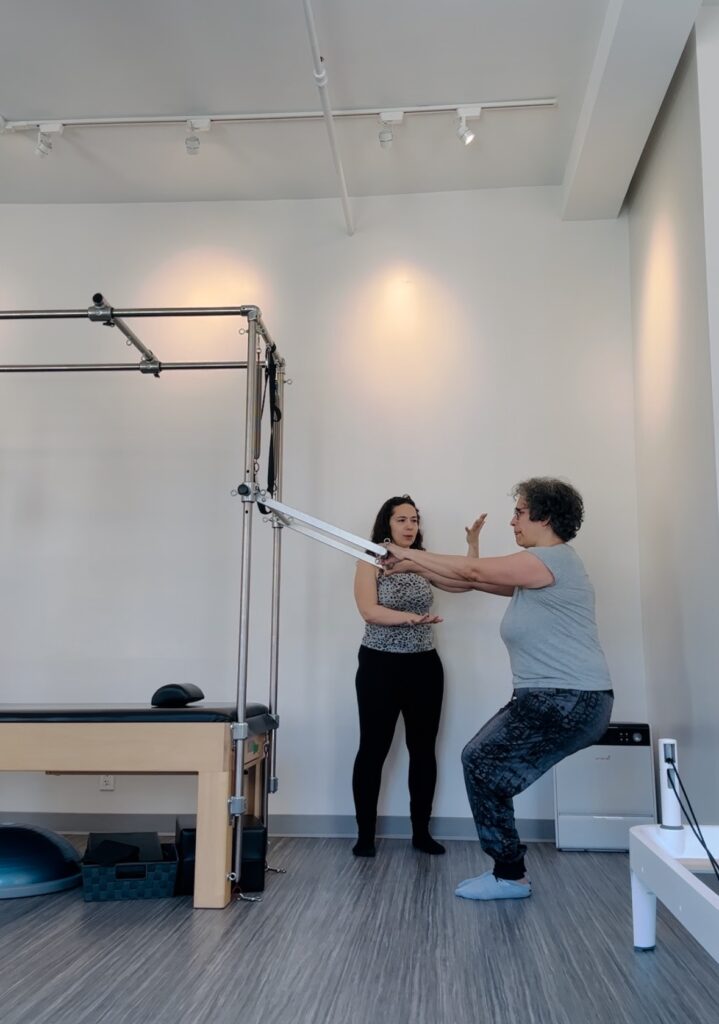Everyone wants to age gracefully and maintain their independence for as long as possible. Nobody wants to be frail. Osteoporosis, a condition where bones become weak and brittle, or its precursor Osteopenia, affects more than half of people over age 50.
We’ve had a woman in her 40s with osteopenia come in for her Dynamic Body Assessment Session practically in tears over the diagnosis, fearful that she was aging prematurely, was at risk of having a hunchback, and of course fractures. While these concerns are understandable, there’s a lot of research that shows that they are not inevitable. We’ve also had a client in her 70s who after working with us consistently for years, walk in ecstatic because her doctor told her she had not only improved her bone density, but had actually grown an inch.
Three important things which are in your control can affect this trajectory. One is having a strong foundation of movement mechanics. The second is increasing muscle tone which will help prevent you from falling and aid in recovery. The third is doing weight bearing activities which can increase your bone density through movement.
Foundation
One of the most common things you hear about building bone density is to lift heavy. While this is true, doing so with a body that is not prepared to lift heavy is more likely to lead to injury and fracture and thus be unsustainable. For example, if you have persistent low back pain and herniated discs, it doesn’t make any sense to squat with more weight. Imagine climbing stairs with far too my grocery bags, it’s just going to cause more strain.
First, you must establish good mechanics. This is where exercises like footwork, done lying down on the reformer, are very helpful. The reformer removes some of the load and stress on the joints, allowing the legs to bend and stretch with more ease so that range of motion may be prioritized and strength is gradually built. Here, we can address things like how to use the breath for better muscular engagement, how to use your core to stabilize your back while your legs bend and stretch, how to build awareness of how pressing into our heels versus our toes generates a different muscular contraction in the leg, and other skills and tools to help build a solid movement foundation.
Muscle Tone

Once you’ve built a foundation of good movement mechanics, you’re ready to progress with building strength. Dr. Deborah Kado MD recently presented at the Bone Health and Osteoporosis conference that “Muscles help prevent falls in the first place or help you heal faster if you fall.” Things like adding resistance, working on holding a position for a longer amount of time, increasing range of motion, adding load/weight, adding stability challenges and coordination challenges will all help build your muscular fitness.
For example, a foundational exercise like bridging involves learning how to use your glutes and hamstrings to lift your hips off of the floor. The next steps for building strength here could include holding the hips up for a longer period of time, keeping the hips up in the air while you bend and straighten the legs against the foot bar of the reformer, squeezing or pressing something between the inner thighs, or involving your arms in the air holding weights.
Weight Bearing

Once you have a strong foundation and you’ve built up muscular strength you can work on making bigger shifts in affecting bone density. In order to truly effect bone density, weight and impact have to be heavy. If it’s not heavy, it’s not stressing you enough to have a physiological reaction.
What is weight-bearing? People often confuse weight bearing with resistance training or using weights of any kind. What weight bearing means, is that the bones you are trying to strengthen need to be working in opposition to gravity. For example, standing squats are weight-bearing for the hips and thighs while the same position on the reformer lying on your back such as bridging is not weight bearing even if you have resistance from the spring while doing it. Using your own body weight in a Pilates exercise such as balancing on hands and knees is weight-bearing. Lifting 2 pound dumbbells with your arms while lying on your back is not weight-bearing. You can increase the load of any weight-bearing position by adding force, weight or resistance provided it is working in the same direction as gravity. Doing a lunge or squat is weight bearing. Doing a lunge or squat with dumbbells is more impactful for bone density.
The Right Approach
In conclusion, the most important thing about managing Osteopenia or Osteoporosis whether you’ve been diagnosed or are working preventatively, is to take an approach that is appropriate for your level of fitness and ability. Having good solid movement foundation goes a really long way. Don’t feel like you need to get to step three when you’re still working on step one and if you’re on step three make sure that you’re staying consistent with your practice and continuing to work on all the good juicy lessons from foundational mechanics and other non weight bearing muscular strengthening.
Don’t despair because you’re not “there” yet. You can get started at 50, 60, 70. The only thing you can do wrong is not get started.

